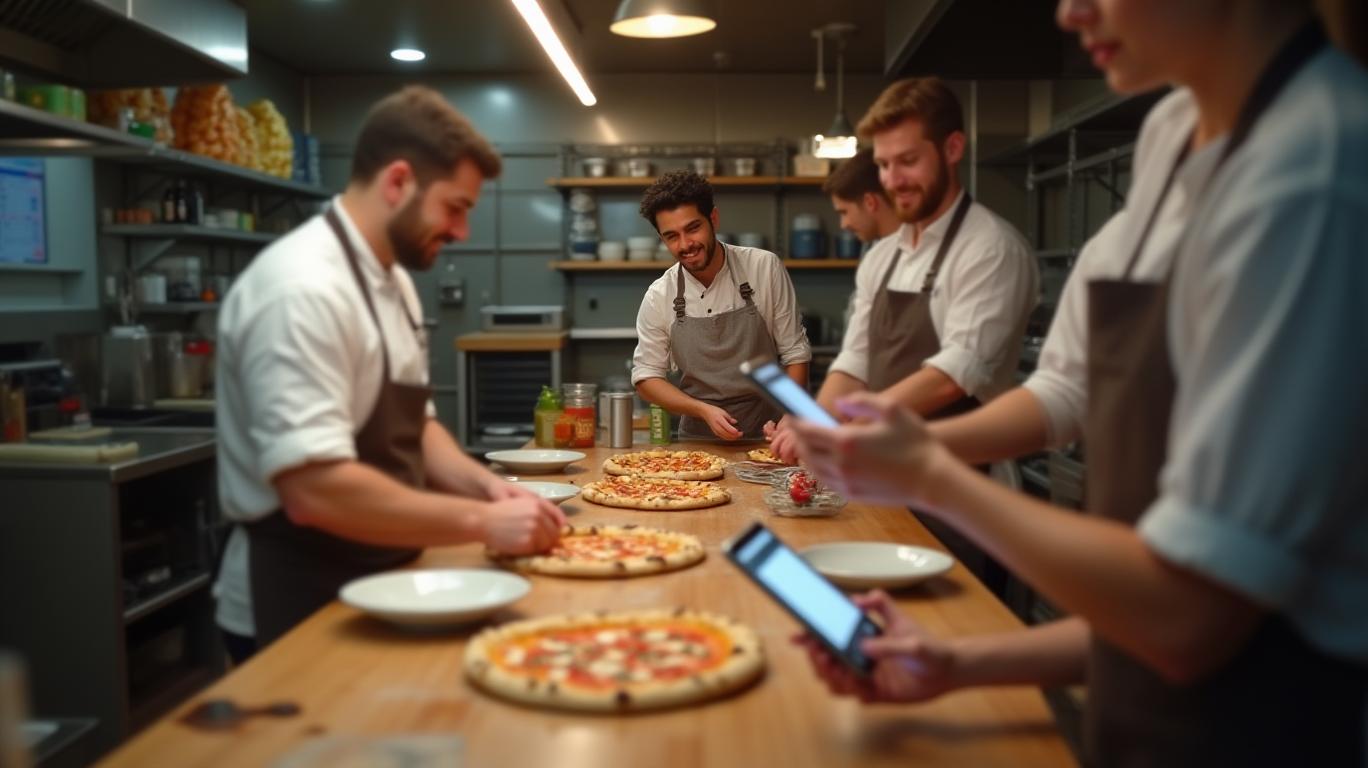HungerRush: Building the Future of Restaurant Tech Through Ecosystem Integration
In an industry where operational efficiency and customer loyalty are existential imperatives, HungerRush is emerging as the linchpin of the $1.5 trillion global restaurant tech market. By seamlessly integrating its proprietary software with leading platforms like Grubhub and Uber Eats, HungerRush has positioned itself as the critical infrastructure for restaurants seeking to reduce costs, scale delivery operations, and dominate their local markets. This is no longer just about software—it’s about redefining the DNA of restaurant operations through a unified ecosystem.

The Power of Integration: Grubhub and Beyond
HungerRush’s 2025 partnership with Grubhub marks a pivotal shift in the fragmented restaurant tech landscape. By embedding Grubhub’s order management directly into its POS system, restaurants can eliminate the chaos of juggling multiple third-party apps. For instance, Carl Ligda of Specialty Pizza reduced operational costs by 22% after adopting the Grubhub integration, enabling him to dynamically switch between Uber Direct’s delivery network and in-house drivers during peak hours. This flexibility isn’t just a cost-saving tool—it’s a competitive moat.
While legacy aggregators like DoorDash and Grubhub battle declining margins due to rising commission costs, HungerRush’s integration ecosystem is capturing value at the restaurant level. Its flat-rate pricing model for Uber Direct and elimination of subscription fees ensure restaurants retain 100% of the upside from delivery growth. This “partner, not parasite” approach is resonating: over 80% of new multi-unit franchisees now prioritize platforms like HungerRush that unify operations rather than fragment them.
AI-Driven Efficiency and the Loyalty Flywheel
HungerRush’s OrderAI platform isn’t just a tool—it’s a profit multiplier. By automating phone and text orders, restaurants like Piezoni’s have reduced labor costs by 15% while increasing order accuracy by 30%. But the real goldmine lies in its customer loyalty data system. With 61% of diners willing to share personal data for discounts, HungerRush’s platform turns this data into recurring revenue streams. Piezoni’s, for example, saw a 20% redemption rate on loyalty offers after deploying HungerRush’s email/text marketing tools, directly boosting profits by 15%.
This flywheel effect—better data driving better offers, which drive more orders—is why analysts at Goldman Sachs predict HungerRush’s revenue will grow at 40%+ annually through 2026. CEO Bill Mitchell, a former tech exec who spearheaded Uber Eats’ expansion, is laser-focused on monetizing this ecosystem. His vision? A platform where restaurants can manage everything from delivery logistics to loyalty rewards through a single interface—no third-party middlemen required.
Why Now is the Inflection Point
The restaurant tech sector is at a crossroads. Consumers expect seamless omnichannel experiences, but 70% of independent restaurants still use outdated systems. HungerRush’s ecosystem solves this by offering:
1. Operational Simplicity: One platform for Grubhub orders, Uber Direct deliveries, and in-house workflows.
2. Cost Control: Flat-rate pricing eliminates hidden fees, with no monthly subscriptions.
3. Scalability: Franchises like Giovanni’s can standardize operations across 100+ locations.
4. Customer Ownership: Loyalty data keeps diners coming back, reducing reliance on third-party aggregators.
The numbers speak louder than words. Restaurants using HungerRush’s full-stack solution see average order values rise by 18%, while delivery costs drop by 25%. This margin expansion isn’t just a blip—it’s a structural shift.
The Investment Thesis: Buy the Infrastructure Leader
HungerRush isn’t just another SaaS player—it’s the operating system of the restaurant industry. With Bill Mitchell’s strategic focus on AI and integration, and a customer base growing at 30% annually, this is a rare opportunity to invest in a company that’s defining the future of food tech. The market is ripe for consolidation, and HungerRush’s ecosystem-first approach leaves competitors scrambling to catch up.
For investors, the path is clear: HungerRush’s moat is widening, its unit economics are unmatched, and its leadership is unparalleled. This isn’t just a stock—it’s a stake in the next wave of restaurant tech. The time to act is now, before the ecosystem becomes too dominant to ignore.
Nick Timiraos
May 20, 2025

Comments
No comments yet